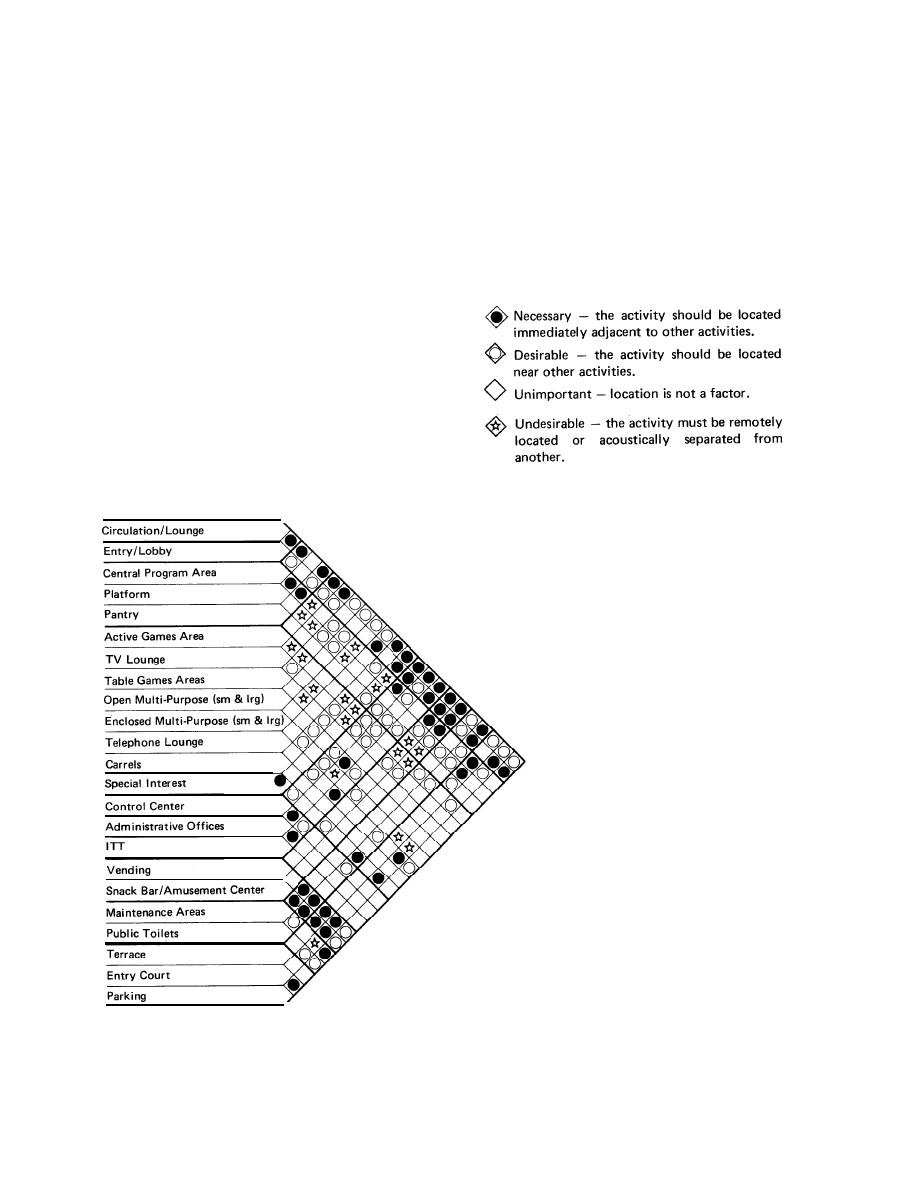
Design Guide: Recreation Centers Spatial Organization January 1976
requirements for each space. The purpose of
(3) Visual Access. The third factor gov-
this matrix is to provide assistance in the
erning spatial organization is visual access which
establishment of priorities for planning spatial
is the capability of seeing from one area to
organization. If trade-offs are required because
another. This is important for administrative
of design constraints, they can be evaluated in
control and increasing awareness of alternative
terms of the effect they will have on the
activities.
function of the Center. Values have been
(4) Compatibility. Compatibility of activ-
assigned to spatial relationships as follows:
ities, the fourth criterion, measures the level of
q
interference one activity can tolerate from
another without disturbance; gives considera-
tion to requirements for privacy, concentration,
and attention of the users; conflicting elements
are noise, physical activity, and administration
policy.
D. AFFINITY CRITERIA. These results of an
activity analysis are summarized in Table 5-1,
Affinity Matrix, which presents the adjacency
Table 5-1. Affinity Matrix.
5-2



 Previous Page
Previous Page
